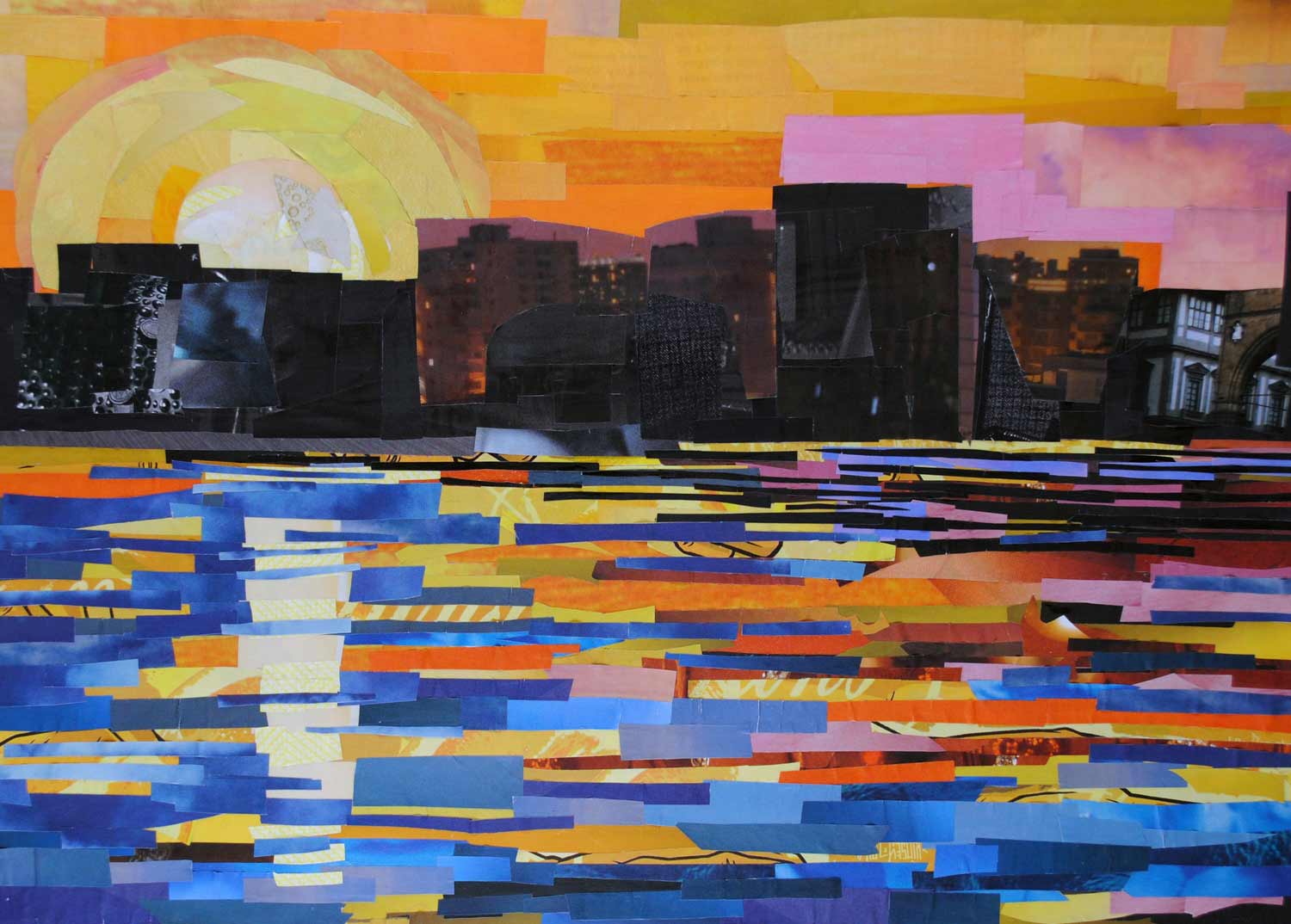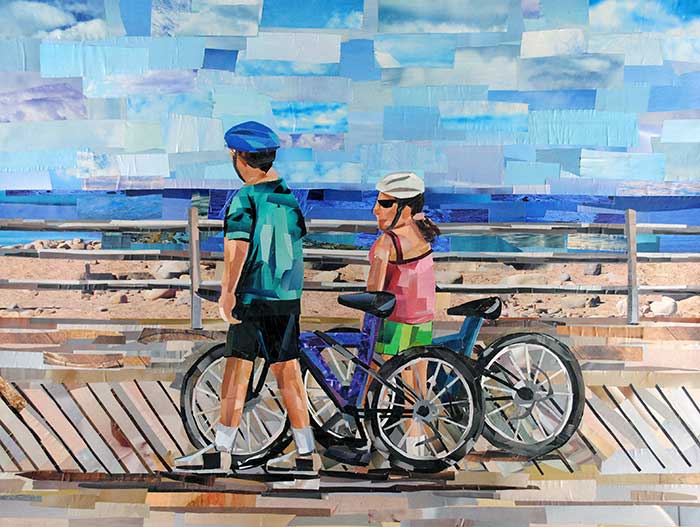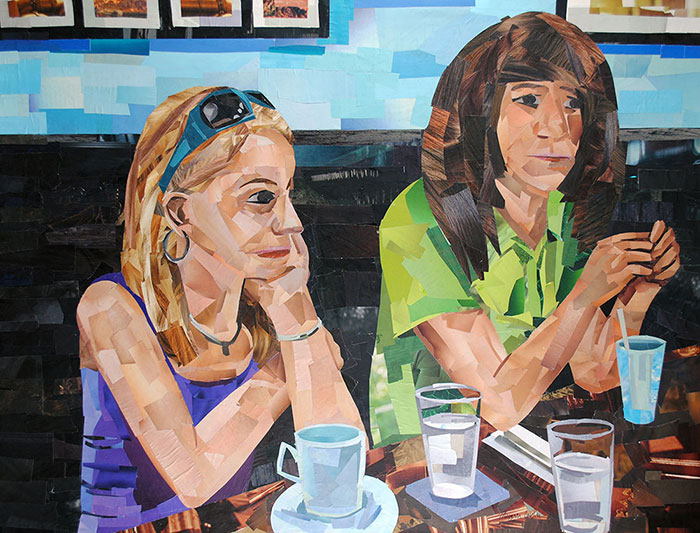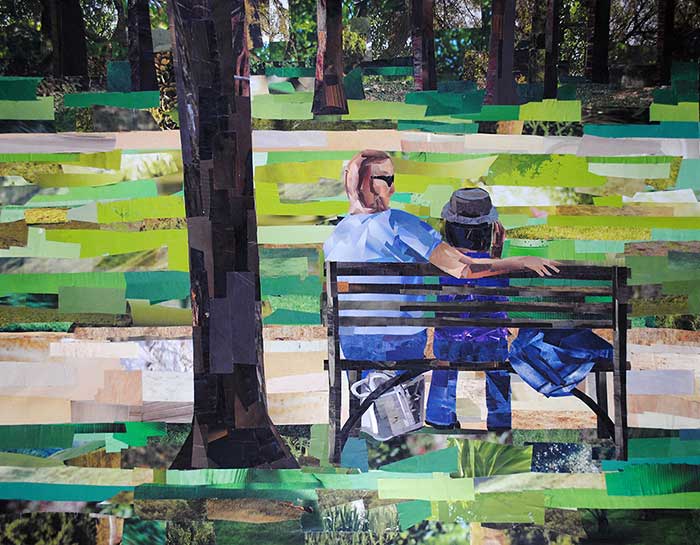The opening for my exhibition yesterday was a lot of fun. Below I’ve posted a bit of information about my art based on the artist talk I gave:
My work has evolved a lot before it became the body of work that it is today. I started making figurative collages when I was in high school, although back then the pieces were much simpler—I didn’t use as many pieces of paper layered on top of one another. I also used a lot of oil pastels with my work—although I later decided the oil pastels were covering up some of the interesting patterns and textures from the magazine strips.
In college, I studied Painting and Creative Writing, both of which have influenced the artwork for this show. With painting, I became familiar with great painters in art history and took a liking to impressionist and post-impressionist work. I liked working with distinct brushstrokes in my own work because I was more interested in shifts of color than blending colors. As a result, my technique translated well over to collage.
With a background in writing, I’ve always had an interest in stories and storytelling. I wanted to make these scenes look like snapshots from everyday life—like the viewer could eavesdrop on the lives of a few strangers. Also, by showing each scene as a snapshot, the viewers can have their own thoughts on what they think is going on in the collage—what the figures are doing, saying, or thinking.
To give you a brief idea of what my process is like, for each work of art I got started by making a quick sketch. For some pieces, like up-close portrait pieces, the sketch was more detailed since I was concerned with capturing a likeness of the sitter. With collages that show the figure from afar, I had a tendency of making a quick sketch so I’d have an idea of the overall layout.
I use photographs as references for my work—mainly because the collage process can take so long that I wouldn’t be able to catch the immediacy of these scenes if I worked from life. Next, I page through magazines and tear out pages that have the colors and textures that I want to use for a particular piece. Then I typically begin with the background as I cut out shapes of paper and glue them down. Thus the background of the collage is pushed back and really is the background.
By working strictly with magazines, I limit my palette to the colors, textures, and patterns I can find in magazines. I like how flexible the medium is – I wait to varnish my collages until they’re complete, that way I can move around the pieces of paper, pulling up pieces in areas that are overworked.
I really enjoy it when people tell me they think one of my pieces is a painting—that I’ve used acrylic or oil paint. One of the focuses of my work is to push the traditional ideas of what we think makes a painting a painting and a collage a collage by merging the idea of these two mediums together with a technique I call “painting with paper.”
My collage work has been inspired by Chuck Close, a photo realist painter. When you get up close to some of his work, you’ll noticed that he’s worked on a grid, using circles and squares of color that make the piece look like you’ve zoomed in to the pixels of a photograph. I like this concept of taking one medium and making it look like an entirely different medium.
With Gerhard Richter, a German painter, I was really taken by a series of paintings he did that look like photographs—he painted a series in such a way that they featured the imperfections of photographs, the glares and blurriness that the medium can capture. I like the idea of having viewers question the medium I use. I also, in general, like the notion of taking something ordinary, like a magazine, and taking it out of its context by turning it into a work of art.
The inspiration for this particular body of work came from looking back at my previous work and looking at the different directions I could go with it. Previously, I had worked on a series of portraits that had similar compositions—just up-close views of the sitter. With this new body of work, I was really interested in working on showing different angles and narrative scenes. Instead of focusing in on depicting a likeness of the sitters from up-close, I wanted to experiment more with the figures interacting with the environment around them.
In the future, I’d like to create a series that really captures my process. That would include having areas of the collage where the white of the paper shines through, sections of the under-drawing being revealed and overall the shapes of the magazine strips would be more isolated and noticeable. I’m also planning to work on a much larger scale and experiment with animating my collages.








I love learning about your process.